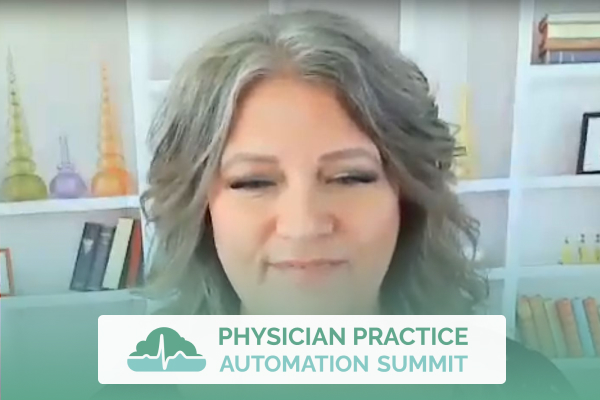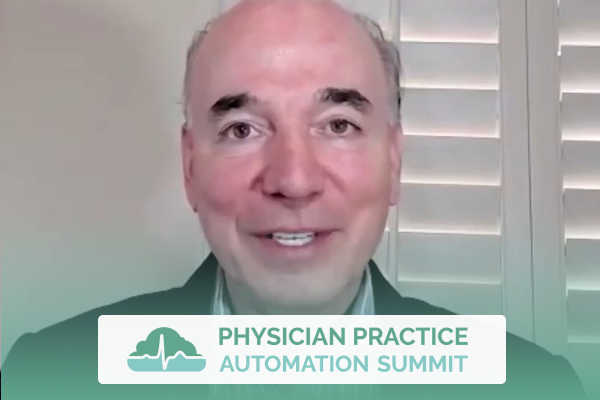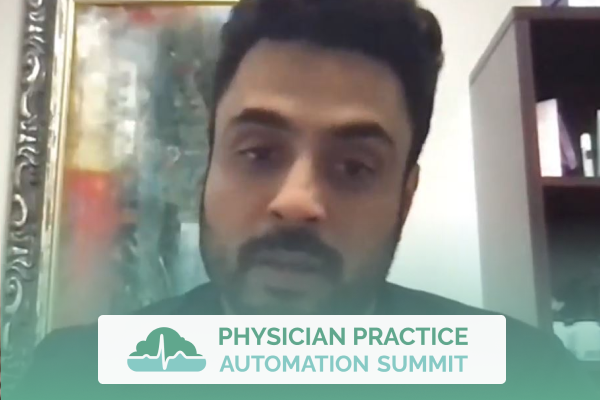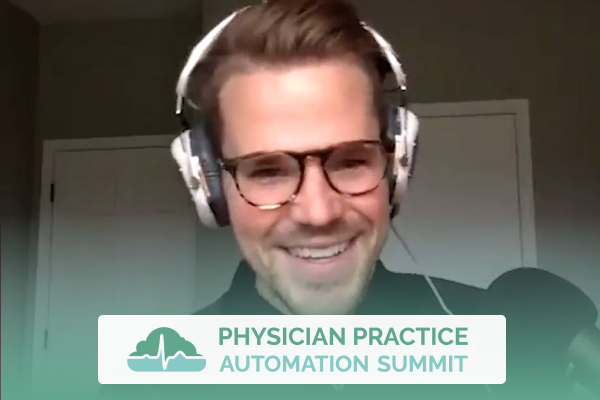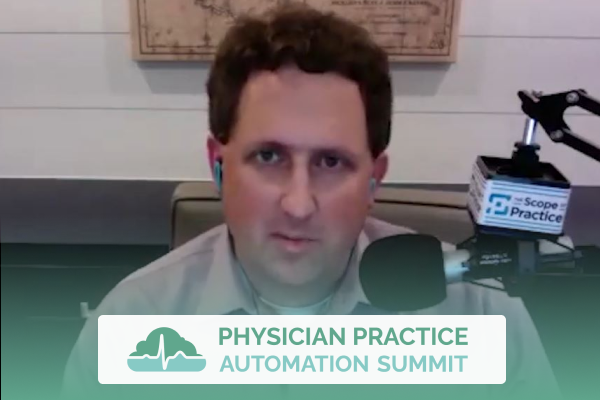Join the discussion below

Dr. Ruan is the Founder and CEO of Texas Center for Lifestyle Medicine. He devotes his career in practicing and building systems that allow for efficient delivery of healthcare. He is a board certified internal medicine physician but also have advised with companies to improve their workflow, company culture, marketing,... Read More

Angie Ates has over 21 years in Corporate Executive Leadership and was the #1 District Manager with Mimi Maternity and led teams with companies like Gap, Children’s Place and Fashion Bug, responsible for over $40 million in annual revenue. Read More
Cheng-Huai Ruan, M.D.
Alright everyone, super excited to introduce Angie. So Angie has over 21 years experience as a corporate executive leadership, and was the number one district manager with Mimi Maternity and led teams like Gap and Children’s Place and Fashion Bug and responsible for over $40 million in revenue. So I’m really excited to have her on. Right now, she does something a bit different. She has created herself into a ultimate health practitioner. She’s a board certified and complimentary alternative health practitioner and launched six successful clinics and has over 5,000 clients, which is a big deal when it comes to automation. She’s the founder and CEO of Academy Epic, an integrated natural health education platform based on principles of empowering and equipping others. She’s an international speaker, has trained over 10,000 practitioners worldwide and onstage with my hero, Les Brown, Dr. Lee Cowden, Charlotte Brown, just to name a few. These are big names in the industry. Her unique ability to shake things up and ability to take action quickly really provides her with helping others achieve truly unprecedented results.
She’s been featured in over 200 health training videos and has been hand-selected to customize trainings in companies like YMCA, Northern Nutrition, Best Bio. She’s also highly spiritual as an ordained minister and diplomat of pastoral science and full matsu shaman. She’s able to channel her gifts in a much deeper way and bring in cutting edge energy medicine to integrative health practitioners. So the reason I have her on is because she is just a force when it comes to understanding what it takes to do things big, do things fast and execute on a level that few people have ever executed before. Now, whether or not you believe or support naturopathy, this is not the point. The point is getting people onto the summit to really talk about and tackle really the business of medicine. So I am super, super, super happy to introduce Angie to the summit. All right, welcome to the summit. Thanks for being on.
Angie Ates
Absolutely, I’m thrilled to be here.
Cheng-Huai Ruan, M.D.
You know, you have a heck of a resume. And it’s so interesting because of the amount of stuff that you’ve been involved in. I’m sure you’ve seen a lot and I’m so happy to talk to you and ask you about some things that you’re familiar with and that’s membership models. Because you know, here at Texas Center for Lifestyle Medicine, we don’t have a membership model. We have a traditional insurance model but there’s a lot of physicians who are really curious about the membership model. And there’s no perfect way to do medicine. It’s all very individualized. So let’s talk about it. First of all, I just want to start. What are some of the most common misconceptions about like membership models or cash models in medicine? What are they?
Angie Ates
Most of them are, I’m not going to earn any money, right? No one’s going to come to me because they all want to use insurance and no one wants to pay cash. And that is a lie. Those are the biggest ones, in all reality, because you know, we do have a society that’s trained on, do you take insurance? But we also have this conscious society, community, that’s waking up going, maybe I don’t want to use insurance and I want a different type of care and I’m willing to do a membership model.
Cheng-Huai Ruan, M.D.
Right. You know, and expanding on that a little bit is, I think we all, as physician entrepreneurs, we all get a little bit of imposter syndrome. Like, oh my gosh, who would pay for this? What kind of volume am I going to get? Is there some sort of like predictive analytics about how this is going to go? Or is it just like, okay, let’s start my membership model and see what happens?
Angie Ates
I believe you can set your intentions and actually have a strategy. I help practitioners all the time with an actual strategy. And you’re right, because a lot of folks are thinking, who would pay for me? Right? But the reality is if you are a professional, a practitioner that’s getting in results, right? Your patient’s coming to you for a reason and you’re going to get an end result. They’re going to pay you. And they’re going to pay you well because you just solved their root cause issue. And that’s really what the name of the game is.
Cheng-Huai Ruan, M.D.
Right, and so, you know, I think there’s a lot of friction points too, for transitioning to membership models. I mean, there’s those doctors, and I just talked to one last week, who is currently within the traditional model, a pediatrician, and wanting to kind of do her own thing because she understands some of the limitations when it comes to corporate medicine, such as, sometimes patients can’t, you know, have to go through a phone tree to get to the right person. It goes to a central location but that central location service is 2,000 doctors, right? And so there’s, she believes in that tour sort of, you know, hand-holding and stuff like that. And that’s what patients deserve and that’s absolutely true. And so, you know, for her, transitioning from that into the unknown is terrifying. You know, and how do we remove some of the frictions into transitions? What are some of the common things that people can experience?
Angie Ates
You’re right on target. I was just at a medical conference where I had lots of fun at it, I might add. I love working with this sector where they’re talking about in medical school, you’re not trained entrepreneurship, right? At all. And so that is the unknown. So when they’re stepping from this, what is perceived as a safety net, right, into this is all about me. When we can establish a strategy and a framework, some type of structure, then it takes that friction point of I’m going to go broke and not be able to feed my family. So it’s really all about creating, what is the container that your practice is going to look like? Is it going to be a direct primary care? Is it going to be cash only? Is it going to be membership? Is it going to be a hybrid? What is it? So the number one friction point of, this is unknown, doesn’t have to be unknown. It really can have a container and a pathway or roadmap, as I like to call it, to get you to where you want to go.
Cheng-Huai Ruan, M.D.
Absolutely. I think if we start with the end result in mind, and I think for most doctors, the end result is not necessarily a business model but the end result is the quality of life, right? And I think what we have to do is kind of reverse engineer what that quality of life looks like and what the role of you as a doctor is for your patient. So you kind of threw out some terms there, like direct primary care. What is that exactly?
Angie Ates
So direct primary care has a couple perceived ideas and then reality. So a lot of folks think that DPC, direct primary care, is where you’re independent. And that can be, there’s also groups of colleagues that join together to open a clinic. But you’re having direct relationship with your patient. That’s what you’re having. Sometimes you have insurance. Maybe you’re gonna stay in the PPO environment. I have a medical doctor up in Michigan that is starting her own DPC but she’s keeping the PPO insurance because her market is saturated with PPO patients. So it makes sense. Sometimes though, you’re not doing that. You’re just doing a membership where then they get reduced rates on other activities that you’re offering, other services.
Cheng-Huai Ruan, M.D.
Gotcha. So the term direct primary care encompasses, it could be a full membership cash, or it could be a hybrid, right? So it’s not necessarily one or the other?
Angie Ates
Absolutely.
Cheng-Huai Ruan, M.D.
Okay. So, that’s what we’re talking about for DPC. Okay. If you have a cash model that’s membership and then you have a hybrid model that’s insurance plus membership, do you then also have a non-membership fee for service model as well? Is that a possibility?
Angie Ates
You can do it that way. I find whenever I’m consulting with any of the practitioners, that that’s really difficult to delineate and to manage. It gets really messy, as I call it. So I believe that if you’re going to do insurance, you need to select the best, you know, low-hanging fruit insurance that actually pays. So pediatrics, an example you just gave. So this gal focuses on pediatrics. Her PPO in the area has so many well baby checks that she loves to work with the PPO because she actually gets paid, right? Where we know that sometimes, when you’re working with insurance, if you don’t know the proper CPT codes and activities and all that, that you’re really not getting paid. In fact, you’re paying to see the patient and that’s where it gets again, messy. So I like to work with my practitioners to say, here’s your membership. Let’s just say it’s $80 a month. And then you give those reduced office visits. So you’re still getting an office visit, so it’s not like a concierge practice where it’s 24/7, you get to see me all the time. But rather it truly is, here’s the membership and here’s the boundaries and restraints of the membership because that’s the other friction point. If I do this, then my patient thinks they need access or are going to have access to me 24/7 and that’s not accurate.
Cheng-Huai Ruan, M.D.
Okay, so I guess that’s my misconception as well because I assumed a lot of these models have to do with direct access but you’re saying that’s not necessarily true. I guess then the real question is, okay, if me as a physician, I don’t necessarily want my patients for full-time, 24/7 direct access. How is it that I can charge this membership model? What is the value that I can deliver to my patients to let my patients know, hey, this is the value I deliver. Yet something above what other people deliver. What does that look like?
Angie Ates
That looks like they come in for a copay, per se, for their office visit is $30. Where if they were using an insurance, it’s 60 or 75, depending on your insurance.
Cheng-Huai Ruan, M.D.
Ah, got it.
Angie Ates
You get reduced labs, where we know if you roll up to wherever you’re going for your labs, which don’t have to necessarily disclose their price that they’re charging, right? So we have that whole piece but we have discounted labs. So you’re going to get a TSH for your thyroid for $10, not $410 and then your insurance pays a little bit and you still paid $38. So that’s one of the benefits you’re able to offer in a membership.
Cheng-Huai Ruan, M.D.
Okay. Transparency, right? That’s the . Yeah, and I’ll tell you, you know, in a insurance-based practice, transparency can be very difficult. And in fact, I think most practices have a hard time delivering that message for transparency in insurance model. But we tend to be pretty good at it because we develop a system that’s very unlike other practices but most practices understand, if your doctor let you take insurance, you understand that sometimes, patients can get a bill for a service that was done maybe a year ago and part of it is because it’s been stuck in the revenue cycle in aging claims for a year.
That is not even your fault, you know? And then ultimately they get an EOB and they’re like, what is this? This was done last year. You’re like, oh, okay, I maybe you have to write it off or something like that. And that is a pain, you know. Absolutely is a pain. There’s no transparency beyond that because you, as a doctor, you don’t necessarily know where the heck the claim submission is in the revenue cycle as well. So I do see a value point for the membership model with transparency. Also there’s cost saving. It does sound like there’s cost saving there for people who really want to take advantage of the system, right?
Angie Ates
Definitely. When we had our integrative center in Missouri, when I was a director and also seeing clients, and we had our integrative center, we had our nurse practitioner there as well, and we were able to secure negotiated pricing with quest labs. So you could go order your labs or get them at the hospital wherever, or you could get them through us and our membership. And as I indicated before, that TSH was $10, not $38. And so you’re able to get that type of discounting for your patients as well, which is a huge value save.
Cheng-Huai Ruan, M.D.
Absolutely. And I think as insurance becomes more and more complicated and especially 2022 and on, that’s going to be sort of a sexy thing for both doctors and patients. No, absolutely. And so what about, maybe there’s a third thing that I want to talk about and maybe it’s my misconception as well. It kind of goes back to the 24/7 sort of on-call doctor as a concierge service, right? So this comes at maybe some ignorance because I’m not familiar with DPC or concierge medicine. Are your … What is exactly the demographics of the type of patients? Are they usually more wealthier? Is it more of a mix? Because in my head, I think they’re generally more wealthier. They sort of expect a higher level of attention. So what does that really look like?
Angie Ates
Well, that is perceived that way but that is not accurate. So typically on the concierge practice, so I work with a medical doctor out of Utah and on the concierge practice, hers are geriatrics. So they’re spending three to four to $500 for her concierge on call medical services as a medical doctor. And they’re older, right? Geriatric is her focus. Now there are DPCs throughout the country that have these families, or you have organizations like the Christian organizations and the other health plan groups, right? The Samaritan and those like that. And so DPCs can qualify to be a provider for those already group plans.
Cheng-Huai Ruan, M.D.
Okay, yeah.
Angie Ates
Digitally, to answer your question directly, it is all ages. There is no one set age because a lot of folks are opting out of the insurance racket. And we know it on both sides, good, bad, and indifferent, and saying, I would rather be able to have a practitioner that aligns with my belief systems, whatever that is, from all the options of medical care out there, and that also is willing to integrate, because I believe in lymphatic massage or acupuncture or something like that. And they’re willing to work with me and support me on that decision so I’m willing to pay $200 a month for care for my whole entire family and only carry a high rider of insurance, which really covers more of the hospital stay or accidents versus actual everyday medical care.
Cheng-Huai Ruan, M.D.
Right. So yes, you talked about, you know, I think it’s health shakes, health shared savings plans, you talked about. They’re not your traditional insurance but basically, you see a doctor and then you submit it on the backend to the shared savings. There’s Christian ministries and a bunch of other ones as well. So I know because we actually see these patients in our insurance practice as well and it works very similarly. So that brings me to my next point is, as membership model doctors, I think there is a way for patients to submit on the backend to the insurance, as long as they got the CPT codes and the itemized lists, right?
Angie Ates
Absolutely. You bet. So it’s the best of both worlds.
Cheng-Huai Ruan, M.D.
Yeah, and so, whenever their patients are submitting on the backend for the services that’s rendered by the physician or the practice, do you know if there’s generally any kickback from the insurance companies, they know we’re not gonna cover this or anything like that? Or is that something that could be improved within a membership model practice?
Angie Ates
It can be improved within the membership model practice. It is just about like every other insurance claim. Depends on who’s examining it. And what the CPT code is and other factors. So no big difference that I’ve experienced.
Cheng-Huai Ruan, M.D.
Okay, great. That’s actually good to know because it really allows the patients to really take it into their own hands too, and allocate resources and budgeting for their health, which I think that’s how it’s supposed to be in the very beginning. So I’ll tell you this though, the coronavirus has created something that’s weird. And I want to call it medical entitlement. And what that really is is that, if you have a coronavirus diagnosis, U07.1. If you have a COVID diagnosis, then your insurance company has to cover the total healthcare that’s associated with that. That’s mandated by the government. That’s very recently. But what’s interesting is that people thought that was a normal thing, anyways.
Very few people understand insurance like deductibles, copays and stuff like that. And it’s not until they go to the doctor’s office and if a doctor’s office actually does pre-verifications, they know that out of pocket but I will say 80% don’t do that. And they get billed on the backend, get a surprise billing. In 2022, that’s no longer allowed. Surprise billing is no longer allowed in the United States. Right? So this means that doctors have to really within an insurance practice have to change their ways. But what it also means is that I think that actually can create such a higher value for the membership model as well because there’s not really ever going to be a surprise billing, right?
Angie Ates
Correct. Because there’s more accountability for what are we doing here. Right? And a lot of your DPCs too are really after that integrative model, that root cause, no longer a pill for an ill, no longer a natural pill for an ill, but truly finding root cause when you work with someone like that, you also save a lot of money because you’re not doing 85 tests and 15 specialists. Instead, you’re like, here’s my method. Here’s what we do for assessments and here’s where we’re going with it. So that helps as well.
Cheng-Huai Ruan, M.D.
Yeah, absolutely. So let’s talk about the inner integrative health care model because I have an integrative healthcare model but we exist strictly within insurance and the traditional route. But what we do is that we work with other practices. Actually, most of the practices that collaborate with us only take cash or their membership models also. Chiropractors, acupuncture. My mom’s an acupuncturist so she only takes cash. Lymphatic massage, craniosacral therapy, PEMF, hyperbaric chambers and stuff like that. So we do work with a lot of people, get a lot of people referred to by those practices. Within the membership model, I want to go back to these specifically the membership model. Is there sort of a range that’s like the golden number ticket for a monthly fee or is it just depending on the practice? How does that really work?
Angie Ates
It really depends on the practice and your location, in all honesty. So I have worked with practitioners, professional medical doctors, that range anywhere from $50 a month all the way up to 120 a month, for basic membership. I’m not talking concierge because that’s a whole, you know, that’s 24/7 access. You’re charging a whole lot more for that, right? But the basic, what we call membership, ranges anywhere from that. Now, depending on if you do family pricing too. So some folks’ll say, okay, $50 for one, or it’s 75 for a couple and it’s $30 a month for every child. So you have family pricing and then you have individual pricing because what sometimes happens is that, one person may have insurance through their employer but to add their spouse is, you know, another 500 a month, where they can have a DPC for $75 a month. So they just carry a higher deductible for emergencies but not for everyday care.
Cheng-Huai Ruan, M.D.
Okay, gotcha. That makes sense. Well, let me ask you this, then. One question leads to another. If then they’re able to offset costs of the premium that they paid for the insurance with the DPC membership model, are the services that’s done within direct primary care or membership model can they go towards the deductible if the patient submits on the backend?
Angie Ates
Sometimes, sometimes not. It depends on what the insurance agreement is and where the practitioner stands with that insurance as well. And I’m not talking Medicare or Medicaid, you know, that’s a whole nother beast.
Cheng-Huai Ruan, M.D.
That’s my next question for you. That is a whole other beast. So let’s jump into that for a second. Let’s jump into that beast. So for what I understand about Medicare and Medicaid and you know, we take government insurance. And Medicare, Medicaid and Tricare, too. So government insurance. The rule is that if you are in network with a government insurance carrier that’s from the CMS. If you’re in network with Medicare, for example, then you’re not supposed to be able to charge for things that Medicare already cover as a cash price. That’s within the contract, right? So thus far, a monthly membership is outside of the contract, is that correct?
Angie Ates
Correct.
Cheng-Huai Ruan, M.D.
And so a lot of doctors have to opt out of Medicare. Now, I’ve been in situations where I have two friends that started their membership model practice but they still did shifts within like urgent care but they actually were still within the contract for CMS. I mean, is it an all or nothing thing? Or can they just allocate that shift to the contract in that position to CMS and have the membership be outside? You know?
Angie Ates
Each state is different and you have to be very creative. So, I’m going to say yes and then I’m also going to say no. I know a practitioner, a medical doctor, that does not, opted out of Medicare, but does call in labs and pharmaceutical prescriptions for her Medicare patients.
Cheng-Huai Ruan, M.D.
Gotcha, gotcha.
Angie Ates
So it’s just a creative working through whatever loophole is needed to be worked through.
Cheng-Huai Ruan, M.D.
Too complicated to talk to this summit. That’s for sure.
Angie Ates
Right, exactly.
Cheng-Huai Ruan, M.D.
That’s for sure. And so, guys, if you are listening to this and you’re kind of straddling, which I know a lot of you are because I know a lot of you. Make sure you consult a lawyer, make sure you consult somebody. Please consult with somebody before you start a new LLC and do your own thing. And then you’re in the Medicare contract at the same time. I know in the state of Texas, this is very taboo, you’re not able to do that in the state of Texas. But you’re right. It’s a lot of state dependent as well, because not everyone knows that your contract is not with Medicare directly. Your contract is for your local Medicare contractor, your MAC. That’s usually state dependent and/or geographic dependent. And each of them have their own specific rules. So there’s no blanket statements here. So that’s absolutely true. I fought this before.
The last one we’ll jump into is health coaching. So, you know, on this summit, there’s a huge representation of people who are advocacies for health coaching. We got Mayo Clinic on here, Cleveland Clinic uses health coaches. We have Margaret from the National Board of Health and Wellness Coaches and Wellcoaches organization. We have Sandy, who is the head of the FMCA, Functional Coaching Medicine Alliance. And then we have also two other practitioners that have utilized health coaches. So health coaches recently became a thing in the government. They got their own CMS taxonomy in April of 2021, which is awesome. And so let’s talk about health coaches. How do we use health coaches and sort of other professionals really in the lifestyle medicine or lifestyle management arena within a practice?
Angie Ates
So I’ll give you an example of how I was recently approached by an OB/GYN. And so she has about a six month waiting list, anywhere from four to six months. She’s a fertility specialist. And so what we created was a 90-day health coaching program. How I, this is how I describe it. You have a warm-up band to the show band, right? To the cover band. And so what’s happening is that in this case, we’re working with that patient to prepare the body for fertilization. And so in this case, because I train professionals, we look at not just eating, nutrition, right? What to add, what to take away, what to neutralize. But we’re also looking at nutrient deficiencies and depending on how long the program is, we may even look at pathogens. So we’re looking at an EBV virus, possibly in the thyroid, or you’re looking at something else, whether through labs or other methods of assessments. So we’re preparing that body maybe through a detox and reset, a six month program for that.
For this particular doctor, who you’ve got to wait six months anyways so let’s help that patient be ready for whatever’s going to happen, right? So that’s an example. There’s other examples because you can actually, especially as even a DPC, you can work within what you’re doing, a program that includes lifestyle management. And that would be a health coach for 90 days. And I say health coach loosely. I know, you know, got a lot of support from the government for that, what I call preventive care model, which is excellent. Thankfully we finally do. But at the same time, we want to be really mindful of where the health coach had their training. I know we were talking about this earlier, that the $12, six-hour training on health coaching isn’t what we’re referring to.
Cheng-Huai Ruan, M.D.
Correct, yes, yes. Yeah, there’s new standards, that, well, there’s not really new standards. There’s old standards that are now recognized as a national standard and even moving from 2022 to 2023, that’s going to be far more solidified. And so really looking forward to that as well. And so my last thing is, I’m going to ask you, and I ask for most of the people who attend this summit. Let me tell you this. What do you … What have you learned recently that you wish you knew maybe five, six years ago?
Angie Ates
Ooh, that’s a very good question. What have I learned recently? Well, five or six years ago, I started my training program. That is a really good question. I’ve learned so much. So I have to pinpoint it to one thing.
Cheng-Huai Ruan, M.D.
Just one thing, one most impactful thing you can think, yeah.
Angie Ates
So I’m going to say, really probably because of all the chaos we currently have as of this recording. Constitutional rights and exactly what, you know, taking dominion over your body and making decisions and those choices that we should be able to have over our own body, in many aspects, not just current conditions, but in many aspects of even claiming and owning what we put in our body, mind and spirit. I mean, I healed myself of multiple autoimmune diseases and that’s the first thing I had to learn is, looking in that mirror, I owned it all. And that’s been longer than five to six years but it really has brought it home again, that preventive care is the way to do it. So anything you can do, prevention is going to help the temple last longer.
Cheng-Huai Ruan, M.D.
Yeah and actually allocating time to care for yourself. You know, a lot of doctors have a hard time doing this, including myself. So you’re absolutely right. So we definitely need to allocate a lot more time for self-care, for fulfillment and for understanding that at the end of the day, it’s the relationships to ourselves and to each other that truly matter. I want to thank you for that. That’s really powerful.
Angie Ates
You’re welcome.
Cheng-Huai Ruan, M.D.
And so, any final advice to the doctors kind of listening to this and the people who are listening to this are probably trying to decide between different models of practice right now. Any final piece of advice for them?
Angie Ates
I would say that we’re in a position in our life right now that purpose, passion, and profit, the trilogy, is where we need to be going, to really live our purpose, why we’re here. And it’s fueled by passion, where you’re not overwhelmed and burn out, but still able to make a profit because we deserve, in our professional training, to make a profit and to earn a profit. And that is all in alignment with what I call our trilogy. And the final thing I will say is that, I love doing the consulting model of helping the practitioners, the professionals, transition into a DPC or a hybrid or something that allows them to live their purpose and in their genius, right? And to really have that passion fuel them and ultimately make sustainable profit for themselves and their family. That’s my favorite thing to do in life. We got success.
Cheng-Huai Ruan, M.D.
Amazing. And we talked about before that we came on, you have a gift for our audience, correct?
Angie Ates
Absolutely. So I’d love for you to go to our website at academyepic.com, forward slash challenges, with an S. And we have a five-day protocol challenge using our four pillar protocol, which is the SANE approach. We unwrap that in five days. And a four-day business challenge, which discusses the three phases of business. So you know what to do and what phase. You don’t need Google ads and Facebook ads, if you’re not in the right phase for that. And really how to, again, align your genius with the world to shine because we are in a moment where we need to shine our geniuses, for sure.
Cheng-Huai Ruan, M.D.
That is amazing. Thank you so much for being on and go ahead and click on the website. Can you repeat the URL again?
Angie Ates
Absolutely. Academyepic.com, forward slash challenges with an S.
Cheng-Huai Ruan, M.D.
Excellent. Just go to that URL, just click on one of the challenges. I mean, this is really truly invaluable information. And if you guys are actually lost about what model to pick, I mean, we got someone here who kind of knows a thing or two and walking doctors through it. So thank you for being on and providing all this excellent value.
Angie Ates
Absolutely. I’m so grateful to be here and I hope all the listeners get inspired or a little push from behind to really, again, stand in your genius. It’s time and you can always reach me at [email protected].
Cheng-Huai Ruan, M.D.
Excellent. Thank you.
Angie Ates
You’re welcome.
Downloads

